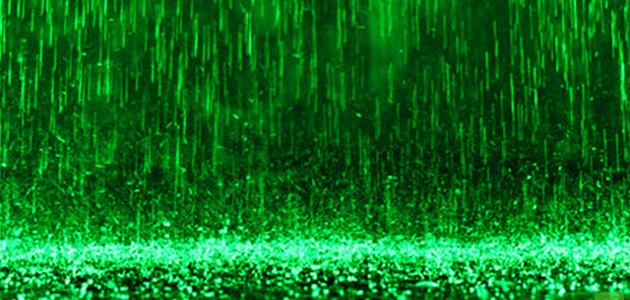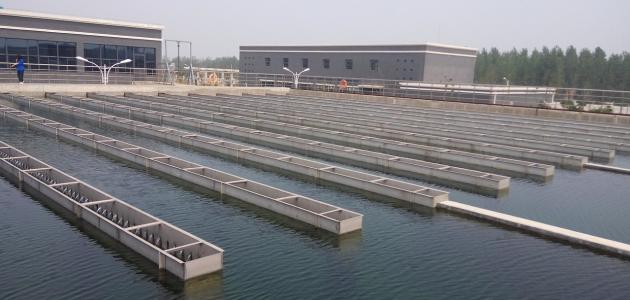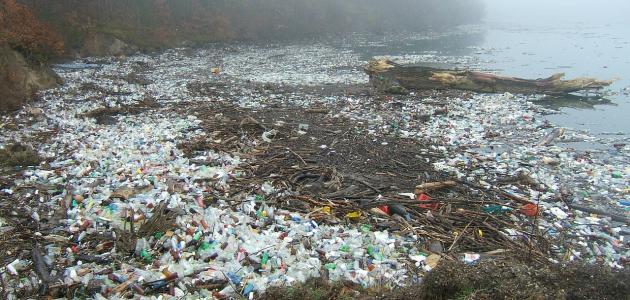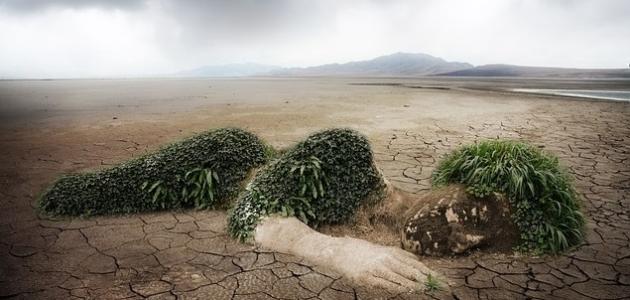Definition of acid rain
The concept of acid rain (in English: Acid Rain), or what is called acid deposition, is a broad term that includes any form of precipitation that falls on the Earth’s surface from the atmosphere and contains acidic components. Such as sulfuric and nitric acids, in their wet and dry forms. The pH of rain in normal conditions reaches 5.6, while the pH of acid rain ranges between 4.2 - 4.4, which means that it is somewhat acidic. Because carbon dioxide dissolves in rainwater, producing weak carbonic acid.
The concept of acid rain was formulated in the year 1852 AD by the Scottish chemist Robert Angus Smith while he was examining the chemistry of rainwater near industrial cities in England and Scotland. He recorded his results in his book (Air and Rain: The Beginnings of Chemical Climatology) in 1872 AD, and according to the Royal Society In chemistry, he was called the father of acid rain. In addition, scientists studied the phenomenon of acid rain in the XNUMXs, but the issue of acid rain became a recognized regional issue in the XNUMXs and early XNUMXs after it caused damage in Western Europe and eastern North America.
Forms of acid rain
Acid rain falls on the Earth's surface from the atmosphere in the following forms:
- Wet deposition: Wet deposition means the fall of nitric and sulfuric acids formed in the atmosphere onto the Earth's surface, mixed with all forms of precipitation, including rain, snow, fog, and hail.
- Dry deposition: Dry deposition is defined as the accumulation of acidic particles and gases falling from the atmosphere on surfaces, such as: bodies of water, plants, and buildings in light of the low level of humidity. When rain falls on those surfaces, they mix with these components to result in acid rain that flows To bodies of water, they may reach wildlife and threaten them. These particles can also interact during their transport in the atmosphere and result in larger particles that are harmful to human health. It is noteworthy that the degree of acidity of the components in the atmosphere that fall to the ground through dry deposition depends on the amount of rain. The percentage of dry precipitation in desert areas is higher than wet precipitation compared to areas that receive several centimeters of rain every year.
Causes of acid rain
The formation of acid rain is due to several reasons, including natural activities such as volcanoes and decomposing plants, in addition to human activities. According to the Environmental Protection Agency (EPA), it has been found that the most important causes of the formation of acid rain are due to emissions of sulfur dioxide (SO).2) and nitrogen oxides (NOX) resulting from fossil fuel power plants, oil refineries, and vehicles, and one-third of sulfur dioxide emissions, in addition to a quarter of nitrogen oxide emissions in the atmosphere, result from power generators used to produce electricity, when these gases are released into the atmosphere and dissolved in water vapor It produces sulfuric acid (H2SO4) and nitric acid (HNO3Although acid rain gases arise over industrial areas in urban areas, they may harm rural areas. Because gases are often transported hundreds of miles into the atmosphere via wind.
Read also:Definition of pollution and its typesEffects of acid rain
Acid rain has many effects, including the following:
Impact on lakes and rivers
The pH of lakes in natural conditions reaches 6.5 or higher, but acid rain falling on lakes and rivers in addition to rain that falls on land and flows to them increases their pH, so the effects of acid rain in aquatic habitats are most noticeable, as it causes a rise in acidity. There is a decline in the number of fish and other aquatic animals in the water. It is also noted that the ability of living organisms to survive in acidic waters differs among them, as shrimp, sea snails and mussels are considered the animals most affected by water acidification, followed by salmon, minnows and roach in particular. Their eggs and young, acidic water can cause deformities in small fish, and it can also prevent the eggs from hatching properly.
Most surviving fish die when the water becomes a pH of less than 5, and when the pH of lakes reaches 4, the lake is considered dead, as all life forms disappear. High water acidity also poses a threat to the life of some types of living organisms indirectly, as it causes The release of toxic substances that flow from the soil into bodies of water, such as aluminum, causing harm to aquatic organisms. In addition, entire ecosystems are affected, especially the food chains between different living organisms. If one type of fish that represents food for other animals disappears, those animals will gradually disappear as well. Dead fish also represent food for certain types of large insects, and therefore an increase in the number of dead fish increases the process of growth of large insects and their numbers, which affects the small insects and plankton that represent their food.
Read also:Environmental pollution damageImpact on buildings
Buildings and facilities are subject to deterioration due to climatic conditions. Such as rain, snow, and wind over time, but acid rain helps make this natural process happen faster, and this includes buildings, statues, and even vehicles, pipes, and cables, but it is noteworthy that things made of limestone or sandstone are the most affected by acid rain. ; Because it is affected by acidic pollutants in its gaseous state, in addition to being affected by them when mixed with rainwater.
Impact on trees and soil
Acid rain affects plants and soil in various ways, making them more vulnerable to diseases and insects, and weakening their ability to withstand bad weather conditions. These effects include the following:
- Erosion of the waxy layer that covers the leaves, which leads to their destruction and prevents plants from being able to carry out the process of photosynthesis properly.
- Dissolving the nutrients and minerals present in the soil, which affects the growth of plants, and this leads to the loss of some nutrients from the soil, such as calcium.
- The release of toxic substances such as aluminum from the soil, making it more difficult for plants to absorb water.
Impact on human health
Pollutants that make up acid rain, such as sulfur and nitrogen oxides, interact in the atmosphere and produce fine particles of nitrate and sulfate acids. However, these acids are weak and do not burn the skin on contact. Therefore, walking in the rain does not pose any danger, but the particles may reach the lungs by inhaling small droplets loaded with acids present in acid fog, which is considered the most dangerous form of acid rain to the health of the human respiratory system, as inhaling it causes headaches and irritation of the throat, ears, nose, and eyes, and has a negative effect on It is especially harmful to the elderly and patients who suffer from chronic respiratory diseases, such as asthma, in addition to causing lung diseases and heart attacks. In addition, acid rain causes serious diseases to humans when metals leak from the soil into bodies of water and tanks connected to water pipes made of copper and reach the water supply. household.
Read also:The importance of preserving the environmentPositive effects of acid rain
Researchers in biochemistry at the British Open University, in cooperation with NASA, the Academy of Natural Sciences, and the State of Sweden, found that acid rain can have positive effects, namely that the sulfur contained in acid rain contributes to reducing emissions of methane, which is one of the most important greenhouse gases.
Proposed solutions to reduce acid rain
There are many individual and collective solutions by institutions and governments that would contribute to reducing acid rain, including the following:
- The use of the catalytic converter in cars, as it is a technological means used to reduce the emissions of nitrogen oxides released by cars.
- Establishment of power plants based on natural gas; Because the process of burning natural gas produces smaller amounts of sulfur dioxide compared to the process of burning coal.
- Using alternative energy to power vehicles, including natural gas, battery, and fuel cell vehicles, as the Environmental Protection Agency (EPA) is making ongoing developments on gasoline components; To achieve a cleaner burning process.
- Using alternative energy sources to produce energy, such as: solar energy, wind energy, and water energy, in addition to placing restrictions on the use of fossil fuels.
- Coal washing in coal-burning power stations to remove some amounts of sulfur, or using coal with a low percentage of sulfur, in addition to using special gas scrubbing devices (in English: scrubber) to remove sulfur dioxide from the gases released from station chimneys.
- Saving energy use, as the energy production process generates large amounts of pollutants that form acid rain, so it is recommended to use public transportation, bicycles, or walking to move around instead of using cars that produce large amounts of nitrogen oxides.









